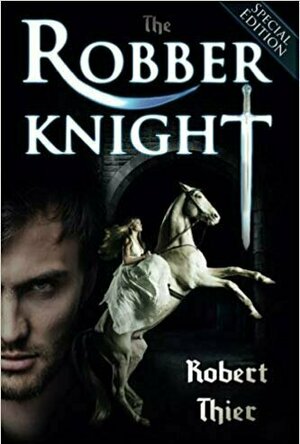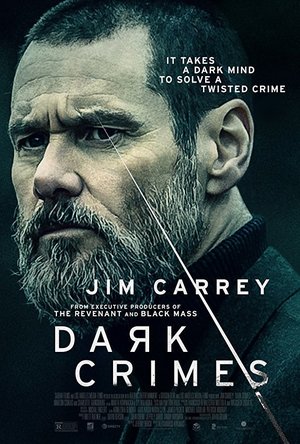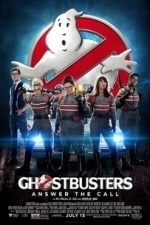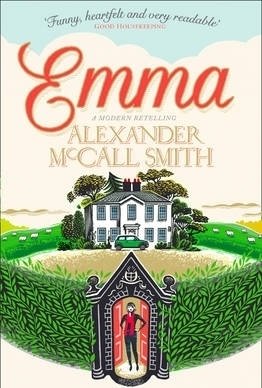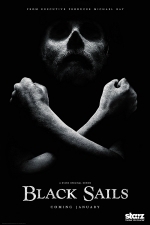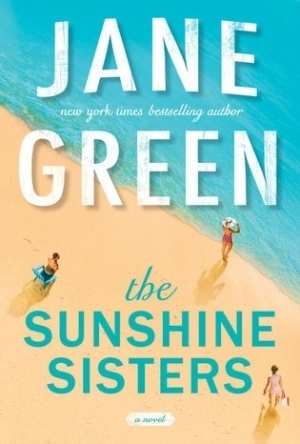Search
Search results
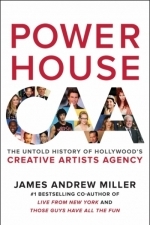
Powerhouse: The Untold Story of Hollywood's Creative Artists Agency
Book
An astonishing—and astonishingly entertaining—history of Hollywood’s transformation over the...
Biography business theatre
Kara Skinner (332 KP) rated The Robber Knight in Books
Sep 10, 2019
When you are fighting for the freedom of your people, falling in love with your enemy is not a great idea. Or is it? Ayla has to defend her castle and her people all on her own, with nobody to help her but a dark warrior she hates with all her heart.
Sir Reuben, the dreaded robber knight, has long been Ayla’s deadliest enemy. He has prayed on her and her people ever since her father fell ill, and she swore he would hang for his crimes. Now they are both trapped in her castle as the army of a far greater enemy approaches, and they have only one chance: stand together, or fall.
This book wasn’t bad, honestly. I’m a huge fan of historical fiction, and it had been awhile since I’ve read a medieval love story, so that was a nice change of pace.
The author is a historian, so there are a lot of little things in this book that you don’t see in a lot of other historical romance books. For instance,you can’t pull out arrows because there are often barbs attached to cause fatal wounds if pulled out. I did like learning about all of these facts. But sometimes Thier lets the historian in him gets the best of him, but more on that later.
Lady Ayla was a pretty interesting character. Headstrong and wise for her years, she is very noble and progressive. She has all of the makings for a great leader– with the exception of knowledge. I loved how kind and committed she was to her people and I love the fact that she has some spunk. I mean, if I’m getting robbed in the forest by this random stranger, then I hope I would swear him out too (of course, if I could beat him up and get away, then that’s even better, but Ayla doesn’t have much self-defense skills). But there were many times that she was annoying, like her insistence on being near battles, even before she started treating the sick. And how she tried to manage Sir Isenbard during battle. She had called on him for help because he was an experienced knight, and now she was questioning his commands and strategies in the heat of battle!
Mostly, though, I really did like Ayla. She defines the idea of nobility. With war inevitable, she’s willing to ride personally to the edges of her land to warn her subjects and she is always at the outskirts of battle to help care for the wounded. She invites everyone into the castle for their safety and rations herself as well as the others to conserve food. She’s even willing to corrupt herself to save her people.
Reuben is an excellent character as well, although it did take me awhile to like him. In the beginning he fell a little flat. It’s clear that he used to be a knight but something happened and now he robs people for his own greed. A near-death experience and being saved by Lady Ayla reawakens the humanity in him. And apparently also some depth.
In the beginning of the book he spends a lot of his time admiring his loot and laughing about his victims, who thought they had a right to steal from him. But that’s all he does. We have no real insight into his character or backstory until after he’s in Ayla’s care. Only then are there hints of a bad history where he had been arrested many times, been tortured, and had at one point been a member of respectable society. If it weren’t for the fact that I liked Ayla’a character and the plot so far, I probably would have stopped reading.
Thier is a writer who has really good potential in becoming a great romance writer, especially for historical fiction. The plots have some unique twists that are augmented by his knowledge of history and after Reuben’s character shaped up, he was an excellent love interest. But there is one huge problem with this story: the footnotes.
There are so many footnotes throughout most of the book that I feel like I’m reading a history textbook, which is not good when I usually read romance novels to take a break from homework. Not only are they distracting and unnecessary, but they are also rude and condescending. Sure, sometimes they were useful, like in explaining the references to the seven princes of hell. Another one was a pretty funny anecdote about how one of his readers had actually confirmed that lard burns and that burning arrows work because they had actually done it. There is also a lot of wit throughout the footnotes which is pretty amusing. But most of the time, they were annoying.
For instance, Robert Thier thought it was necessary to include a footnote about how witches were considered bad during medieval times. Seriously? Even if someone failed history, we know that witches are not considered fine, upstanding citizens. Or maybe he thinks all of us have been locked in our rooms with no books, internet or television for our entire lives and for the month of October we all miraculously fell into a coma so we couldn’t see the giant blow-up witch in the neighbor’s yard. And then we’d all wake up singing Christmas carols after the month long coma without a care in the world because this happens every year so we don’t know what a witch is. (I’m developing a conspiracy theory about how these strange comas was caused by witchcraft.)
Maybe Thier assumed that instead of us thinking Reuben was scared of witches when he wondered if Ayla was one, we just thought he was commenting on how much Ayla looked like Sandra Bullock.
And one of the footnotes was just plain offensive. Here is the line of text that the footnote is attached to: “Heel! Abominable villain! You dare defy me?” (page 74)
Now, here’s the footnote: “Sorry to disappoint the ladies, but this doesn’t refer to high heels. It is a medieval term for a very nasty person.”
Excuse me? Did you just assume that I thought it meant high heels and that would make me excited? What world do you live in?
Apparently he thinks “the ladies” are so dumb that we are incapable of taking context clues and we immediately think everything relates back to fashion. Maybe I didn’t know it meant “very nasty person”, but it’s pretty clear it’s a swear or insult of sometime, not a freaking Jimmy Choo. Does he just imagine us thinking high heel every time we hear the word?
“She broke his nose with the heel of her hand.” Oh. High heel!
“Heel, fido! I said heel!” Oh. High heel!
“It will take one or two days for your cut to heal.” Oh. High heel! (Because if he thinks we don’t understand the difference between uncomfortable footwear and an insult, then he probably thinks we can’t spell, either).
But hey, at least Robert Thier thinks women can memorize stuff, because the footnote links stop as the vocabulary is repeated instead of new terms being introduced.
Aside from the footnotes, I really do like this book, and I can’t wait to read the second part of it, which I’ll read soon. Thier still has a long way to go, but I think after he has more experience, he’ll write some great books.
Sir Reuben, the dreaded robber knight, has long been Ayla’s deadliest enemy. He has prayed on her and her people ever since her father fell ill, and she swore he would hang for his crimes. Now they are both trapped in her castle as the army of a far greater enemy approaches, and they have only one chance: stand together, or fall.
This book wasn’t bad, honestly. I’m a huge fan of historical fiction, and it had been awhile since I’ve read a medieval love story, so that was a nice change of pace.
The author is a historian, so there are a lot of little things in this book that you don’t see in a lot of other historical romance books. For instance,you can’t pull out arrows because there are often barbs attached to cause fatal wounds if pulled out. I did like learning about all of these facts. But sometimes Thier lets the historian in him gets the best of him, but more on that later.
Lady Ayla was a pretty interesting character. Headstrong and wise for her years, she is very noble and progressive. She has all of the makings for a great leader– with the exception of knowledge. I loved how kind and committed she was to her people and I love the fact that she has some spunk. I mean, if I’m getting robbed in the forest by this random stranger, then I hope I would swear him out too (of course, if I could beat him up and get away, then that’s even better, but Ayla doesn’t have much self-defense skills). But there were many times that she was annoying, like her insistence on being near battles, even before she started treating the sick. And how she tried to manage Sir Isenbard during battle. She had called on him for help because he was an experienced knight, and now she was questioning his commands and strategies in the heat of battle!
Mostly, though, I really did like Ayla. She defines the idea of nobility. With war inevitable, she’s willing to ride personally to the edges of her land to warn her subjects and she is always at the outskirts of battle to help care for the wounded. She invites everyone into the castle for their safety and rations herself as well as the others to conserve food. She’s even willing to corrupt herself to save her people.
Reuben is an excellent character as well, although it did take me awhile to like him. In the beginning he fell a little flat. It’s clear that he used to be a knight but something happened and now he robs people for his own greed. A near-death experience and being saved by Lady Ayla reawakens the humanity in him. And apparently also some depth.
In the beginning of the book he spends a lot of his time admiring his loot and laughing about his victims, who thought they had a right to steal from him. But that’s all he does. We have no real insight into his character or backstory until after he’s in Ayla’s care. Only then are there hints of a bad history where he had been arrested many times, been tortured, and had at one point been a member of respectable society. If it weren’t for the fact that I liked Ayla’a character and the plot so far, I probably would have stopped reading.
Thier is a writer who has really good potential in becoming a great romance writer, especially for historical fiction. The plots have some unique twists that are augmented by his knowledge of history and after Reuben’s character shaped up, he was an excellent love interest. But there is one huge problem with this story: the footnotes.
There are so many footnotes throughout most of the book that I feel like I’m reading a history textbook, which is not good when I usually read romance novels to take a break from homework. Not only are they distracting and unnecessary, but they are also rude and condescending. Sure, sometimes they were useful, like in explaining the references to the seven princes of hell. Another one was a pretty funny anecdote about how one of his readers had actually confirmed that lard burns and that burning arrows work because they had actually done it. There is also a lot of wit throughout the footnotes which is pretty amusing. But most of the time, they were annoying.
For instance, Robert Thier thought it was necessary to include a footnote about how witches were considered bad during medieval times. Seriously? Even if someone failed history, we know that witches are not considered fine, upstanding citizens. Or maybe he thinks all of us have been locked in our rooms with no books, internet or television for our entire lives and for the month of October we all miraculously fell into a coma so we couldn’t see the giant blow-up witch in the neighbor’s yard. And then we’d all wake up singing Christmas carols after the month long coma without a care in the world because this happens every year so we don’t know what a witch is. (I’m developing a conspiracy theory about how these strange comas was caused by witchcraft.)
Maybe Thier assumed that instead of us thinking Reuben was scared of witches when he wondered if Ayla was one, we just thought he was commenting on how much Ayla looked like Sandra Bullock.
And one of the footnotes was just plain offensive. Here is the line of text that the footnote is attached to: “Heel! Abominable villain! You dare defy me?” (page 74)
Now, here’s the footnote: “Sorry to disappoint the ladies, but this doesn’t refer to high heels. It is a medieval term for a very nasty person.”
Excuse me? Did you just assume that I thought it meant high heels and that would make me excited? What world do you live in?
Apparently he thinks “the ladies” are so dumb that we are incapable of taking context clues and we immediately think everything relates back to fashion. Maybe I didn’t know it meant “very nasty person”, but it’s pretty clear it’s a swear or insult of sometime, not a freaking Jimmy Choo. Does he just imagine us thinking high heel every time we hear the word?
“She broke his nose with the heel of her hand.” Oh. High heel!
“Heel, fido! I said heel!” Oh. High heel!
“It will take one or two days for your cut to heal.” Oh. High heel! (Because if he thinks we don’t understand the difference between uncomfortable footwear and an insult, then he probably thinks we can’t spell, either).
But hey, at least Robert Thier thinks women can memorize stuff, because the footnote links stop as the vocabulary is repeated instead of new terms being introduced.
Aside from the footnotes, I really do like this book, and I can’t wait to read the second part of it, which I’ll read soon. Thier still has a long way to go, but I think after he has more experience, he’ll write some great books.
Darren (1599 KP) rated Dark Crimes (2018) in Movies
Jul 25, 2019
Story: Dark Crimes starts when Tadek (Carrey) still investigating the murder of a police officer, gets a new lead when Kozlov (Csokas) writes a new book which has an eerily similarity to the murder, leading him to take a dangerous road investigating the murder, which includes challenge the former girlfriend Kasia (Gainsbourg).
The investigation has plenty of ties to the secret sex club known as the cage, where the men get to do whatever they want to the women, Tadek must put his professional and person life on the line to get to the bottom of this investigations.
Thoughts on Dark Crimes
Characters – Tadek is a police officer, he is preparing for retirement (I think) only he wants to solve one final case, which involves the murder of a fellow officer, he goes down dangerous paths which put his career on the line, his marriage on the line, hoping to find the answers. Kozlov is an author that has written a book that sounds too similar to the unsolved case, he becomes the target of the investigation because of his history with the known sex club. Kasia is a former worker in the club, she does have a connection to Kozlov and the victim.
Performances – Jim Carrey is an actor that I like seeing him doing serious roles, sadly, this is one of his worst performances in a long time, he can keep the accent up jumping around all over the place. Marton Csokas usually does well in film, but because the character isn’t very interesting, he struggles to keep our attention. Charlotte Gainsbourg disappoints too, she does everything we expect her to without making the impact.
Story – The story follows a detective that is investigating the murder of a fellow officer that could have found the confession inside a novel, which leads him to target the author in search for the truth. The problem here is we get slow moving conversations which don’t go anywhere, we don’t get into the evidence of the case, it just seems to be watching one man starting to go too far in his search. The case doesn’t seem long enough to make feature film story either.
Crime – The crime side of the film follows the investigation into the murder of a police officer which might be opened up again, it never feels urgent either.
Settings – The film uses the settings to show how the club could be easily accessed without needing to be too far away.
Scene of the Movie – Nothing.
That Moment That Annoyed Me – The dragging story.
Final Thoughts – This is one of the worst crime stories because it just never feels like the case is that important.
Overall: Just a drag.
The investigation has plenty of ties to the secret sex club known as the cage, where the men get to do whatever they want to the women, Tadek must put his professional and person life on the line to get to the bottom of this investigations.
Thoughts on Dark Crimes
Characters – Tadek is a police officer, he is preparing for retirement (I think) only he wants to solve one final case, which involves the murder of a fellow officer, he goes down dangerous paths which put his career on the line, his marriage on the line, hoping to find the answers. Kozlov is an author that has written a book that sounds too similar to the unsolved case, he becomes the target of the investigation because of his history with the known sex club. Kasia is a former worker in the club, she does have a connection to Kozlov and the victim.
Performances – Jim Carrey is an actor that I like seeing him doing serious roles, sadly, this is one of his worst performances in a long time, he can keep the accent up jumping around all over the place. Marton Csokas usually does well in film, but because the character isn’t very interesting, he struggles to keep our attention. Charlotte Gainsbourg disappoints too, she does everything we expect her to without making the impact.
Story – The story follows a detective that is investigating the murder of a fellow officer that could have found the confession inside a novel, which leads him to target the author in search for the truth. The problem here is we get slow moving conversations which don’t go anywhere, we don’t get into the evidence of the case, it just seems to be watching one man starting to go too far in his search. The case doesn’t seem long enough to make feature film story either.
Crime – The crime side of the film follows the investigation into the murder of a police officer which might be opened up again, it never feels urgent either.
Settings – The film uses the settings to show how the club could be easily accessed without needing to be too far away.
Scene of the Movie – Nothing.
That Moment That Annoyed Me – The dragging story.
Final Thoughts – This is one of the worst crime stories because it just never feels like the case is that important.
Overall: Just a drag.
Movie Metropolis (309 KP) rated Ghostbusters (2016) in Movies
Jun 11, 2019
I ain't afraid of no reboot
So it’s here. One of the most reviled films of the decade before it was even released; the Ghostbusters reboot has a tough job persuading fans of the original films and newcomers alike that it’s worth their time.
With director Paul Feig, stars like Melissa McCarthy and Chris Hemsworth and the backing of the series’ previous stars, it’s certainly got a lot going for it, but does the finished product soar or deserve all those dislikes on YouTube? The most disliked film trailer in YouTube history.
Paranormal researcher Abby Yates (Melissa McCarthy) and physicist Erin Gilbert (Kristen Wiig) are trying to prove that ghosts exist in modern society. When strange apparitions appear in Manhattan, Gilbert and Yates turn to engineer Jillian Holtzmann (Kate McKinnon) for help. Also joining the team is Patty Tolan (Leslie Jones), a lifelong New Yorker who knows the city inside and out. Armed with proton packs and plenty of attitude, the four women prepare for an epic battle as thousands of ghosts descend on Times Square.
To look at, Ghostbusters is absolutely stunning with breath-taking CGI coupled with sweeping shots of New York’s famous skyline. With the exception of The Jungle Book, there simply hasn’t been a film so far this year that has looked this good. The ghouls are rendered with brilliant special effects that culminate at the finale for a cracking female-led battle and Slimer even makes an appearance – what more could you ask for?
This is also a witty, occasionally hilarious and on the whole reasonably funny film that utilises Paul Feig’s knack at scriptwriting and the talents of its exceptional cast very well. Melissa McCarthy’s presence proves just what a team she and Feig are, with Chris Hemsworth providing some of the film’s best one-liners.
But the true surprise is in Kate McKinnon. Her wacky, over-the-top character has been tremendously well written and is a joy to watch on screen, especially in the film’s final act. Leslie Jones and Kristen Wiig each make an impact with the former in particular being very funny indeed. The cameos are all present and correct too, with the majority of the previous film’s main cast returning in some small way.
There are a couple of flaws. When you think of Paul Feig then Bridesmaids will probably spring to mind. Then perhaps The Heat or Spy? All these films were given a 15 certification by the BBFC and they used that certificate to its full potential. Ghostbusters is given the much-maligned 12A rating meaning it’s not as immediately hilarious as those films.
That’s not to say it isn’t funny, in fact, part of the humour is derived from spotting references to its much-loved predecessors, but it doesn’t have you rolling about the aisles like Feig’s earlier works.
The story does occasionally suffer from the pressures of influence, with the original film’s footprint well and truly stamped throughout. Nevertheless, this isn’t a real drag and the taut 116 minute running time keeps things moving along nicely with the highlights being the group’s inception and interactions.
Ghostbusters fans; you can rest easy. This isn’t meant to step on the toes of its wonderful predecessors at all. What it has achieved however is to provide its audience, new generation or old, with cracking special effects, a decent, well-written script and some dry, subtle humour. It’s one of the best films of the year so far and no publicity is bad publicity.
https://moviemetropolis.net/2016/07/12/i-aint-afraid-of-no-reboot-ghostbusters-review/
With director Paul Feig, stars like Melissa McCarthy and Chris Hemsworth and the backing of the series’ previous stars, it’s certainly got a lot going for it, but does the finished product soar or deserve all those dislikes on YouTube? The most disliked film trailer in YouTube history.
Paranormal researcher Abby Yates (Melissa McCarthy) and physicist Erin Gilbert (Kristen Wiig) are trying to prove that ghosts exist in modern society. When strange apparitions appear in Manhattan, Gilbert and Yates turn to engineer Jillian Holtzmann (Kate McKinnon) for help. Also joining the team is Patty Tolan (Leslie Jones), a lifelong New Yorker who knows the city inside and out. Armed with proton packs and plenty of attitude, the four women prepare for an epic battle as thousands of ghosts descend on Times Square.
To look at, Ghostbusters is absolutely stunning with breath-taking CGI coupled with sweeping shots of New York’s famous skyline. With the exception of The Jungle Book, there simply hasn’t been a film so far this year that has looked this good. The ghouls are rendered with brilliant special effects that culminate at the finale for a cracking female-led battle and Slimer even makes an appearance – what more could you ask for?
This is also a witty, occasionally hilarious and on the whole reasonably funny film that utilises Paul Feig’s knack at scriptwriting and the talents of its exceptional cast very well. Melissa McCarthy’s presence proves just what a team she and Feig are, with Chris Hemsworth providing some of the film’s best one-liners.
But the true surprise is in Kate McKinnon. Her wacky, over-the-top character has been tremendously well written and is a joy to watch on screen, especially in the film’s final act. Leslie Jones and Kristen Wiig each make an impact with the former in particular being very funny indeed. The cameos are all present and correct too, with the majority of the previous film’s main cast returning in some small way.
There are a couple of flaws. When you think of Paul Feig then Bridesmaids will probably spring to mind. Then perhaps The Heat or Spy? All these films were given a 15 certification by the BBFC and they used that certificate to its full potential. Ghostbusters is given the much-maligned 12A rating meaning it’s not as immediately hilarious as those films.
That’s not to say it isn’t funny, in fact, part of the humour is derived from spotting references to its much-loved predecessors, but it doesn’t have you rolling about the aisles like Feig’s earlier works.
The story does occasionally suffer from the pressures of influence, with the original film’s footprint well and truly stamped throughout. Nevertheless, this isn’t a real drag and the taut 116 minute running time keeps things moving along nicely with the highlights being the group’s inception and interactions.
Ghostbusters fans; you can rest easy. This isn’t meant to step on the toes of its wonderful predecessors at all. What it has achieved however is to provide its audience, new generation or old, with cracking special effects, a decent, well-written script and some dry, subtle humour. It’s one of the best films of the year so far and no publicity is bad publicity.
https://moviemetropolis.net/2016/07/12/i-aint-afraid-of-no-reboot-ghostbusters-review/
The original is better
I received this book for free through Goodreads First Reads.
Six bestselling authors have taken on the task of writing modern retellings of the complete works of Jane Austen. Alexander McCall Smith has successfully taken on the challenge of bringing Emma into the 21st century. Although the settings and characters remain the same the contemporary clothing, vehicles and ideas are something that the reader can relate to.
As fans of Jane Austen will already know, Emma is about rich, single Emma Woodhouse who, despite the disapproval of her good friend George Knightley, enjoys interfering in the lives of others, particularly where romance is concerned. Her meddling backfires when her plan to match her friend Harriet Smith with the boring Philip Elton has disastrous consequences.
Alexander McCall Smith’s version of Emma has more focus on the life of Mr. Woodhouse, Emma’s father, than the original did. He gives an account of Henry Woodhouse’s history and over emphasizes his anxieties about health and safety. Mr. Woodhouse’s concerns are constantly cropping up throughout the novel adding a little humour to the story.
One concern about this modern adaptation is that the writing style was overly formal. If it were not for the references to the current clothing fashions, motorcars and women attending university, the book could have been set during Jane Austen’s lifetime. Take, for example, the character Anne Taylor. Mr. Woodhouse hires Miss Taylor as a governess for his motherless daughters. Miss Taylor’s approach to the girls and her prim and proper use of language made her seem antiquated. She would not have looked out of place amongst other well-known governesses or nannies such as Mary Poppins or Nurse Matilda.
Occasionally it felt that Alexander McCall Smith was mocking the modern world, for example the activities of the younger generation or the way people speak. Whilst this may appeal to older readers who may disapprove of the recent developments and changes in the Western world; it alienates the teenagers and young adults who have grown up with modern technology.
There is no doubt that Alexander McCall Smith has done an excellent job at retelling such a famous novel, however to be a complete modern retelling I think everything needs to be brought into the 21st century. This would include all the characters and the style of language it is written in.
Six bestselling authors have taken on the task of writing modern retellings of the complete works of Jane Austen. Alexander McCall Smith has successfully taken on the challenge of bringing Emma into the 21st century. Although the settings and characters remain the same the contemporary clothing, vehicles and ideas are something that the reader can relate to.
As fans of Jane Austen will already know, Emma is about rich, single Emma Woodhouse who, despite the disapproval of her good friend George Knightley, enjoys interfering in the lives of others, particularly where romance is concerned. Her meddling backfires when her plan to match her friend Harriet Smith with the boring Philip Elton has disastrous consequences.
Alexander McCall Smith’s version of Emma has more focus on the life of Mr. Woodhouse, Emma’s father, than the original did. He gives an account of Henry Woodhouse’s history and over emphasizes his anxieties about health and safety. Mr. Woodhouse’s concerns are constantly cropping up throughout the novel adding a little humour to the story.
One concern about this modern adaptation is that the writing style was overly formal. If it were not for the references to the current clothing fashions, motorcars and women attending university, the book could have been set during Jane Austen’s lifetime. Take, for example, the character Anne Taylor. Mr. Woodhouse hires Miss Taylor as a governess for his motherless daughters. Miss Taylor’s approach to the girls and her prim and proper use of language made her seem antiquated. She would not have looked out of place amongst other well-known governesses or nannies such as Mary Poppins or Nurse Matilda.
Occasionally it felt that Alexander McCall Smith was mocking the modern world, for example the activities of the younger generation or the way people speak. Whilst this may appeal to older readers who may disapprove of the recent developments and changes in the Western world; it alienates the teenagers and young adults who have grown up with modern technology.
There is no doubt that Alexander McCall Smith has done an excellent job at retelling such a famous novel, however to be a complete modern retelling I think everything needs to be brought into the 21st century. This would include all the characters and the style of language it is written in.
<i>I received this book for free through Goodreads First Reads.</i>
Six bestselling authors have taken on the task of writing modern retellings of the complete works of Jane Austen. Alexander McCall Smith has successfully taken on the challenge of bringing <i>Emma</i> into the 21st century. Although the settings and characters remain the same the contemporary clothing, vehicles and ideas are something that the reader can relate to.
As fans of Jane Austen will already know, <i>Emma</i> is about rich, single Emma Woodhouse who, despite the disapproval of her good friend George Knightley, enjoys interfering in the lives of others, particularly where romance is concerned. Her meddling backfires when her plan to match her friend Harriet Smith with the boring Philip Elton has disastrous consequences.
Alexander McCall Smith’s version of <i>Emma</i> has more focus on the life of Mr. Woodhouse, Emma’s father, than the original did. He gives an account of Henry Woodhouse’s history and over emphasizes his anxieties about health and safety. Mr. Woodhouse’s concerns are constantly cropping up throughout the novel adding a little humour to the story.
One concern about this modern adaptation is that the writing style was overly formal. If it were not for the references to the current clothing fashions, motorcars and women attending university, the book could have been set during Jane Austen’s lifetime. Take, for example, the character Anne Taylor. Mr. Woodhouse hires Miss Taylor as a governess for his motherless daughters. Miss Taylor’s approach to the girls and her prim and proper use of language made her seem antiquated. She would not have looked out of place amongst other well-known governesses or nannies such as <i>Mary Poppins</i> or <i>Nurse Matilda</i>.
Occasionally it felt that Alexander McCall Smith was mocking the modern world, for example the activities of the younger generation or the way people speak. Whilst this may appeal to older readers who may disapprove of the recent developments and changes in the Western world; it alienates the teenagers and young adults who have grown up with modern technology.
There is no doubt that Alexander McCall Smith has done an excellent job at retelling such a famous novel, however to be a complete modern retelling I think everything needs to be brought into the 21st century. This would include all the characters and the style of language it is written in.
Six bestselling authors have taken on the task of writing modern retellings of the complete works of Jane Austen. Alexander McCall Smith has successfully taken on the challenge of bringing <i>Emma</i> into the 21st century. Although the settings and characters remain the same the contemporary clothing, vehicles and ideas are something that the reader can relate to.
As fans of Jane Austen will already know, <i>Emma</i> is about rich, single Emma Woodhouse who, despite the disapproval of her good friend George Knightley, enjoys interfering in the lives of others, particularly where romance is concerned. Her meddling backfires when her plan to match her friend Harriet Smith with the boring Philip Elton has disastrous consequences.
Alexander McCall Smith’s version of <i>Emma</i> has more focus on the life of Mr. Woodhouse, Emma’s father, than the original did. He gives an account of Henry Woodhouse’s history and over emphasizes his anxieties about health and safety. Mr. Woodhouse’s concerns are constantly cropping up throughout the novel adding a little humour to the story.
One concern about this modern adaptation is that the writing style was overly formal. If it were not for the references to the current clothing fashions, motorcars and women attending university, the book could have been set during Jane Austen’s lifetime. Take, for example, the character Anne Taylor. Mr. Woodhouse hires Miss Taylor as a governess for his motherless daughters. Miss Taylor’s approach to the girls and her prim and proper use of language made her seem antiquated. She would not have looked out of place amongst other well-known governesses or nannies such as <i>Mary Poppins</i> or <i>Nurse Matilda</i>.
Occasionally it felt that Alexander McCall Smith was mocking the modern world, for example the activities of the younger generation or the way people speak. Whilst this may appeal to older readers who may disapprove of the recent developments and changes in the Western world; it alienates the teenagers and young adults who have grown up with modern technology.
There is no doubt that Alexander McCall Smith has done an excellent job at retelling such a famous novel, however to be a complete modern retelling I think everything needs to be brought into the 21st century. This would include all the characters and the style of language it is written in.

The Sweeney Sisters
Book
"This is a big-hearted belly-laugh of a book, told with wit and poignancy. Family secrets, laughter...

Anonymous Chat Rooms, Dating
Dating, Lifestyle and Social Networking
App
Cool chat rooms. Self-destructing messages. Talk about anything with strangers. Meet new people, ask...
Connor Sheffield (293 KP) rated Black Sails - Season 1 in TV
May 30, 2017
Great Cast (3 more)
Brilliant Action
Great Drama
Very Accurate (thought not 100%)
Game of Thrones with Pirates
I was unawares during my first initial viewing of this show that this was in fact a prequel of sorts to the famous classic novel by Robert Louis Stevenson, Treasure Island. Though I knew that I had heard the names Flint and John Silver among others. However, I must admit, I have never seen, nor read any adaptation of the classic (I know shameful) but I intend to as it is in my collection of books and has been for years. I collected the 'Golden Library' collection which contains nearly all of the most classic books that are must reads for any book worm, and though I do not claim to be a book worm nor a large reader of any kind, I take interest in anything to do with Pirates, Vikings, and most historical fiction.
This show is a great representation of the life and time of Piracy however, and I can review it from a point of view of someone who knows quite a bit about the golden age of piracy in actual historical facts. Unlike the previous pirate content I reviewed, Blackbeard, this show portrays pirates as scarred, dirty, bloody, and frightening in their own way. However, similar to the Blackbeard short series, the pirates and other characters all have near perfect teeth. It seems to be that only (in what I have seen anyways) the Pirate's of the Caribbean franchise has managed to nail the full historical accuracy of the look of a pirate from clothing, to makeup, to the teeth.
On the other hand, this does not cause much of a disturbance to the viewing of this show, because the drama is brilliant, if you can bare the somewhat slow plot lines unfold as there are many characters in this show, and each have a ship full of issues that all need resolving with very few of them actually being resolved. From love interests, to thievery, betrayal and all round general opposition between old allies and acquaintances. There is a lot of 'business' to deal with on the side of Eleanor Guthrie and her dealings with our main protagonists, among other important characters, some of which are based upon historical figures such as Captain Benjamin Hornigold, Charles Vane, Anne Bonny and Jack Rackham (known throughout history as Calico Jack). All portrayed as tough, cunning and sometimes (most times for Rackham) as humerous.
The production of this show is great, with beautiful sets, great looking props and special effects that make this a believable series to get lost in. It's one of the better pirate themed mediums that I have seen, and I personally really enjoy the drama and suspense of the episodes, as well as the twists and turns of certain scenario's which leave you wanting more.
The cast deliver great performances and make you believe that they are truly men or women to be feared, and not to be double crossed. From Charles Vane's tough exterior, to Eleanor Guthrie's power over trade in Nassau, and even Captain Flint's fear inducing presence, as we watch his secrets spill out into the hands of the wrong people.
This is a show I would recommend to anyone who enjoys the theme of pirates, with some fantasy and a lot of drama, but I should warn you, that it doesn't hold back with neither the nudity or the actions performed, during the state in which someone would be naked. Whether it's the whores in the brothel, or the few short term relationships between characters.
Minor Spoilers - nothing too important.
The first example you see of this extent of mature content, as well as some of the humour of this show, is when John Silver is taken into a whore house, and is told that 'Blackbeard' wishes to see him. When he enters, he finds a woman standing there, and as John Silver points out "You are not Blackbeard" only to discover that the beard, is revealed to be between her legs.
As I said, watch at your own risk but I would recommend it to anyone interested in the theme of Pirates during the Golden Age.
This show is a great representation of the life and time of Piracy however, and I can review it from a point of view of someone who knows quite a bit about the golden age of piracy in actual historical facts. Unlike the previous pirate content I reviewed, Blackbeard, this show portrays pirates as scarred, dirty, bloody, and frightening in their own way. However, similar to the Blackbeard short series, the pirates and other characters all have near perfect teeth. It seems to be that only (in what I have seen anyways) the Pirate's of the Caribbean franchise has managed to nail the full historical accuracy of the look of a pirate from clothing, to makeup, to the teeth.
On the other hand, this does not cause much of a disturbance to the viewing of this show, because the drama is brilliant, if you can bare the somewhat slow plot lines unfold as there are many characters in this show, and each have a ship full of issues that all need resolving with very few of them actually being resolved. From love interests, to thievery, betrayal and all round general opposition between old allies and acquaintances. There is a lot of 'business' to deal with on the side of Eleanor Guthrie and her dealings with our main protagonists, among other important characters, some of which are based upon historical figures such as Captain Benjamin Hornigold, Charles Vane, Anne Bonny and Jack Rackham (known throughout history as Calico Jack). All portrayed as tough, cunning and sometimes (most times for Rackham) as humerous.
The production of this show is great, with beautiful sets, great looking props and special effects that make this a believable series to get lost in. It's one of the better pirate themed mediums that I have seen, and I personally really enjoy the drama and suspense of the episodes, as well as the twists and turns of certain scenario's which leave you wanting more.
The cast deliver great performances and make you believe that they are truly men or women to be feared, and not to be double crossed. From Charles Vane's tough exterior, to Eleanor Guthrie's power over trade in Nassau, and even Captain Flint's fear inducing presence, as we watch his secrets spill out into the hands of the wrong people.
This is a show I would recommend to anyone who enjoys the theme of pirates, with some fantasy and a lot of drama, but I should warn you, that it doesn't hold back with neither the nudity or the actions performed, during the state in which someone would be naked. Whether it's the whores in the brothel, or the few short term relationships between characters.
Minor Spoilers - nothing too important.
The first example you see of this extent of mature content, as well as some of the humour of this show, is when John Silver is taken into a whore house, and is told that 'Blackbeard' wishes to see him. When he enters, he finds a woman standing there, and as John Silver points out "You are not Blackbeard" only to discover that the beard, is revealed to be between her legs.
As I said, watch at your own risk but I would recommend it to anyone interested in the theme of Pirates during the Golden Age.
Kristy H (1252 KP) rated The Sunshine Sisters in Books
Jan 21, 2018
Good beach read
Ronni Sunshine has summoned her daughters home. The aging actress is ill, and she wants her daughters by her side. This, however, will be easier said than done, as her three children--Nell, Meredith, and Lizzy--are estranged, both from each other and their mother: the result of a traumatic childhood. Even Ronni will now readily admit she focused on her acting career and beauty rather than her daughters. Her constant belittlement and pressure on the girls made them turn on each other as well. Nell lives the closest to her mother, on a nearby farm, and her son River is in grad school. Middle child Meredith spent her childhood struggling with her weight, thanks to endless biting comments from Ronni; she fled to England and is now engaged. Youngest Lizzie escaped most of her mother's wrath and appears to be the "golden child": she's a successful chef and celebrity, with a TV show and line of related products, but her marriage and personal life aren't all that they seem. Frustrated by their mother's long history of hypochondria, the girls reluctantly return home, excepting to find her fine. However, it seems this time Ronni may be telling the truth: she's really sick. Can the Sunshine sisters set aside their differences? And can they ever forgive their mother?
In some ways, I'm not sure why I keep giving Jane Green books a chance. I liked Summer Secrets well-enough, but was really let down by Saving Grace and Falling. I was intrigued that in her acknowledgements, Green mentions that this is the first book in while where she's felt like herself. I went in hoping that this was true, but still wary, and truthfully, this wariness may have clouded some of my thoughts and feelings about the book.
Overall, this is a summery read, though it does deal with some serious subject matter. If you're looking for a book that will surprise you, this isn't it. Most of these plot points I saw coming from a few miles away; I predicted the majority of the twists and turns before they happened. And, truly, I think the ending is a foregone conclusion. Green relies a bit to heavily on some tropes, as well. Serious older sister? Check. Insecure middle sister? Check. Flighty younger sister? She's here, too, don't worry.
Still, this was a fun book--despite the dark topic at its core--and I found myself compelled to read through the second half in nearly one sitting. Despite some of the transparency of the characters, I was oddly invested in their lives. The novel starts out with a brief glimpse of Ronni summoning her daughters home, then goes back in the past, allowing us to learn about the Sunshine family via various snippets from the sisters at different points in time. In this way, we sort of catch up with the family fast-forward style--it's like a cheat sheet of sorts. It also allows us to get to know each sister a bit better and explore their relationship with their mother (and other sisters). It's easy to see how much influence Ronni had on their lives and how she shaped them into the women they are today.
The girls can certainly be frustrating at times. Poor, needy Meredith drove me nearly mad, with her insecurities and inability to stand up for herself. There's also a point in the book where Meredith magically cleans up after a party (everything is fixed) and later loses a large amount of weight (everything is fixed, again!). I would have liked to have seen a little more plot realism. It was also hard to see how anyone could be quite as big of a doormat as Meredith, even with her mother's influence. And, truly, Ronni is pretty bad. It's an interesting technique--learning how terrible of a mother she is after we're told in the beginning of the novel that she's sick. But, in this way, we're allowed to see how the sisters were alienated by their poor upbringing and how everyone has reached the point we are at today.
Eventually, we reach the present day, with the girls learning about their mother's illness and coming to grips with reality. And, Ronni, of course, must grapple with the kind of mother she was to her children. She's a surprisingly compelling character considering how awful she was to her children, so that's a testament to Green's characterization. To me, the novel picked up a bit more in the present day time period. There were still some silly, unbelievable moments, but I truly did find myself invested in Meredith, Nell, and Lizzy (and Ronni).
The book does wrap things up too easily, as I stated. It's often quite trite and cliche, so you have to go in prepared. Think Lifetime movie, wrapped up in a bow. Still, it's fun at times and certainly a quick read. Well-suited for the beach or a vacation.
I received a copy of this novel from the publisher and Netgalley (thank you!).
In some ways, I'm not sure why I keep giving Jane Green books a chance. I liked Summer Secrets well-enough, but was really let down by Saving Grace and Falling. I was intrigued that in her acknowledgements, Green mentions that this is the first book in while where she's felt like herself. I went in hoping that this was true, but still wary, and truthfully, this wariness may have clouded some of my thoughts and feelings about the book.
Overall, this is a summery read, though it does deal with some serious subject matter. If you're looking for a book that will surprise you, this isn't it. Most of these plot points I saw coming from a few miles away; I predicted the majority of the twists and turns before they happened. And, truly, I think the ending is a foregone conclusion. Green relies a bit to heavily on some tropes, as well. Serious older sister? Check. Insecure middle sister? Check. Flighty younger sister? She's here, too, don't worry.
Still, this was a fun book--despite the dark topic at its core--and I found myself compelled to read through the second half in nearly one sitting. Despite some of the transparency of the characters, I was oddly invested in their lives. The novel starts out with a brief glimpse of Ronni summoning her daughters home, then goes back in the past, allowing us to learn about the Sunshine family via various snippets from the sisters at different points in time. In this way, we sort of catch up with the family fast-forward style--it's like a cheat sheet of sorts. It also allows us to get to know each sister a bit better and explore their relationship with their mother (and other sisters). It's easy to see how much influence Ronni had on their lives and how she shaped them into the women they are today.
The girls can certainly be frustrating at times. Poor, needy Meredith drove me nearly mad, with her insecurities and inability to stand up for herself. There's also a point in the book where Meredith magically cleans up after a party (everything is fixed) and later loses a large amount of weight (everything is fixed, again!). I would have liked to have seen a little more plot realism. It was also hard to see how anyone could be quite as big of a doormat as Meredith, even with her mother's influence. And, truly, Ronni is pretty bad. It's an interesting technique--learning how terrible of a mother she is after we're told in the beginning of the novel that she's sick. But, in this way, we're allowed to see how the sisters were alienated by their poor upbringing and how everyone has reached the point we are at today.
Eventually, we reach the present day, with the girls learning about their mother's illness and coming to grips with reality. And, Ronni, of course, must grapple with the kind of mother she was to her children. She's a surprisingly compelling character considering how awful she was to her children, so that's a testament to Green's characterization. To me, the novel picked up a bit more in the present day time period. There were still some silly, unbelievable moments, but I truly did find myself invested in Meredith, Nell, and Lizzy (and Ronni).
The book does wrap things up too easily, as I stated. It's often quite trite and cliche, so you have to go in prepared. Think Lifetime movie, wrapped up in a bow. Still, it's fun at times and certainly a quick read. Well-suited for the beach or a vacation.
I received a copy of this novel from the publisher and Netgalley (thank you!).
